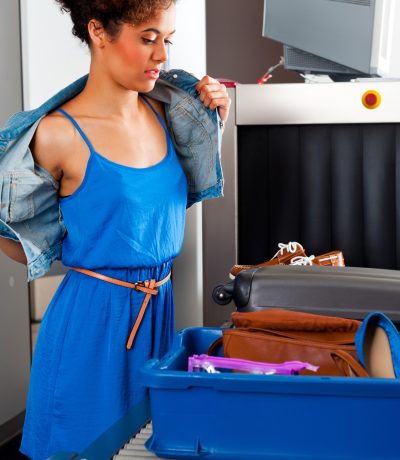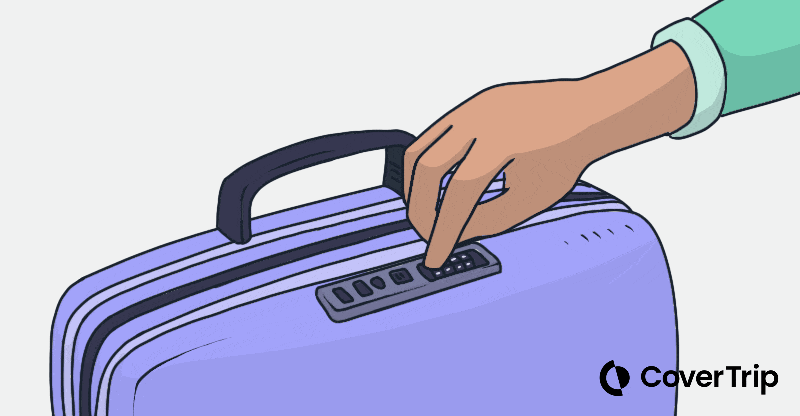Why does it seem like TSA rules change all the time?
30 March 2024
The last time I flew, I was surprised I didn’t have to show a boarding pass to enter the security area. I mean, wasn’t that the thing that stopped friends and family from walking us to the gate and kept us safer?
The agent said, “Just your ID, please.”
I have TSA PreCheck and Global Entry, so I pass through those lines, but on multiple trips over the past six months, I’ve been presented with very stark differences in the security process.
- At Santa Barbara, the agents said, “Keep everything in your bags, including laptops,” so I put my suitcase in one bin, my backpack in another, and strolled on through. No worries, except it took longer than usual for my bag to move through the CT scanner.
- At Heathrow (twice!), my bags were sidelined for extra security checks. Once for not taking my bag of small-sized liquids out, which I didn’t have to do in the US, and once for leaving my e-reader in my bag. It’s not a laptop, so I didn’t think it mattered. Which reminds me, weren’t UK airports relaxing the ban on liquids? Oh, right, not quite yet.
- On the way back through Dulles International Airport, I passed easily through the empty Global Entry line and had to turn back because I missed stopping at the facial recognition scanners. It was my first time using Global Entry, and it was still infinitely faster than the other line.
At various times over the years, I’ve been pulled aside for pat-downs (so fun) and had my fingers swiped with some testing agent. No idea why I was pulled aside; I also didn’t ask because I wanted them to hurry along.
It can sometimes feel like you can’t keep up with the TSA rules, and I don’t think I’m the only one. Many travelers appear to have experienced the same confusion. Even travelers who fly often are confused.
The number of passengers passing through TSA checkpoints has been steadily growing month over month. With increased passenger volume, the slowdowns at security were a cause for concern for airport staff, airline staff, and passengers. Virtually everyone has been affected.
Here’s what you need to know about TSA now.

Technology, and therefore processes, vary by airport
Not every airport has the same equipment, which is the biggest reason for the perpetual confusion.
Depending on what screening equipment is available, you’ll have to modify your strategy to get through security.
Essentially, the TSA isn’t changing the rules, but the technology that’s available may alter the process and thus, your experience going through security.
How to modify your strategy by airport
There are new technologies being rolled out at airports nationwide and globally. In the US, these solutions are supposed to enhance security and speed up the process, which should improve the passenger experience.
- Credential authentication technology (CAT) – confirms the passenger’s ID and flight details without requiring a boarding pass because it automatically matches your ID with the flight manifests. This technology can also identify inconsistencies in travel documents, which can cause issues for travelers if they accidentally type their names slightly differently, for example.
- Computed tomography (CT) – takes a 3D image of passenger’s bags, thus reducing the need to physically examine items like liquids and laptops. Unfortunately, the CT scanners are really slow, as was my experience.
Very recently, a new self-screening service was installed at Harry Reid International Airport in Las Vegas.
The goal is to reduce officer burden at checkpoints and make a more pleasant passenger experience. The self-service system will require travelers to learn a few new steps, which initially will likely slow things down.
With a known traveler number
If you have a known traveler number (through TSA PreCheck and/or Global Entry) you should be able to get through the security line easier and more quickly than those passengers who don’t; however, you may find yourself on the other side waiting longer for your stuff.
Even though boarding passes aren’t required everywhere, there’s no guarantee. You’ll still want to be prepared with one depending on the technology present at the airport through which you are traveling. Otherwise, you may be sent back to the check-in desk.
Without a known traveler number
If you don’t have a known traveler number, you may find it takes longer on both sides. Give yourself some extra time, especially if the airport is busy.
- Check the TSA site’s What Can I Bring list.
- Follow the liquids rule.
- Make sure you have a Real ID.
And give yourself a break because you’re gonna look like a mess after the security line.
Do you have to comply with the TSA?
Short answer is: yes, if you want to reach your plane.
TSA screeners are also referred to as Transportation Security Officers, but they don’t have law enforcement authority. That means they can’t arrest you; only airport police can.
Some air travelers may want to give themselves extra time and pay closer attention to the way the TSA operates. For example, travelers with disabilities or medical equipment like diabetes monitors tend to have a higher-than-average incident rate with agent screenings.
The agency also seems to dislike photographers and videographers. Even though it may feel good to film or take pictures of a TSA screening and an agent confronts you, it’s probably best to comply with their requests even if you disagree with them.
How to get through a pat-down with dignity
If you’re uncomfortable with being touched by strangers (and who isn’t), complying with a full pat-down may be unbearable. Here’s how you can get through it with your dignity intact:
- Introduce yourself and smile (while at the same time taking note of the agent’s name in case you need it later).
- Mention any medical conditions you have, no matter how small. Having a cold or a sore knee could make the experience less invasive.
- You have the right to ask the agent to change gloves, although most do as a matter of practice.
- Breathe steadily and say something immediately if you’re uncomfortable.
- Always insist that the pat-down is done publicly. While it’s not fun for people to stare, you’re better off. Mischief risk is higher behind closed doors.
Can you avoid the TSA?
The agency can’t police every airport or waterway, so you may find some regional airports don’t have them. You can avoid the TSA by flying on charter flights or private air services.
Related topics
Damian Tysdal is the founder of CoverTrip, and is a licensed agent for travel insurance (MA 1883287). He believes travel insurance should be easier to understand, and started the first travel insurance blog in 2006.
